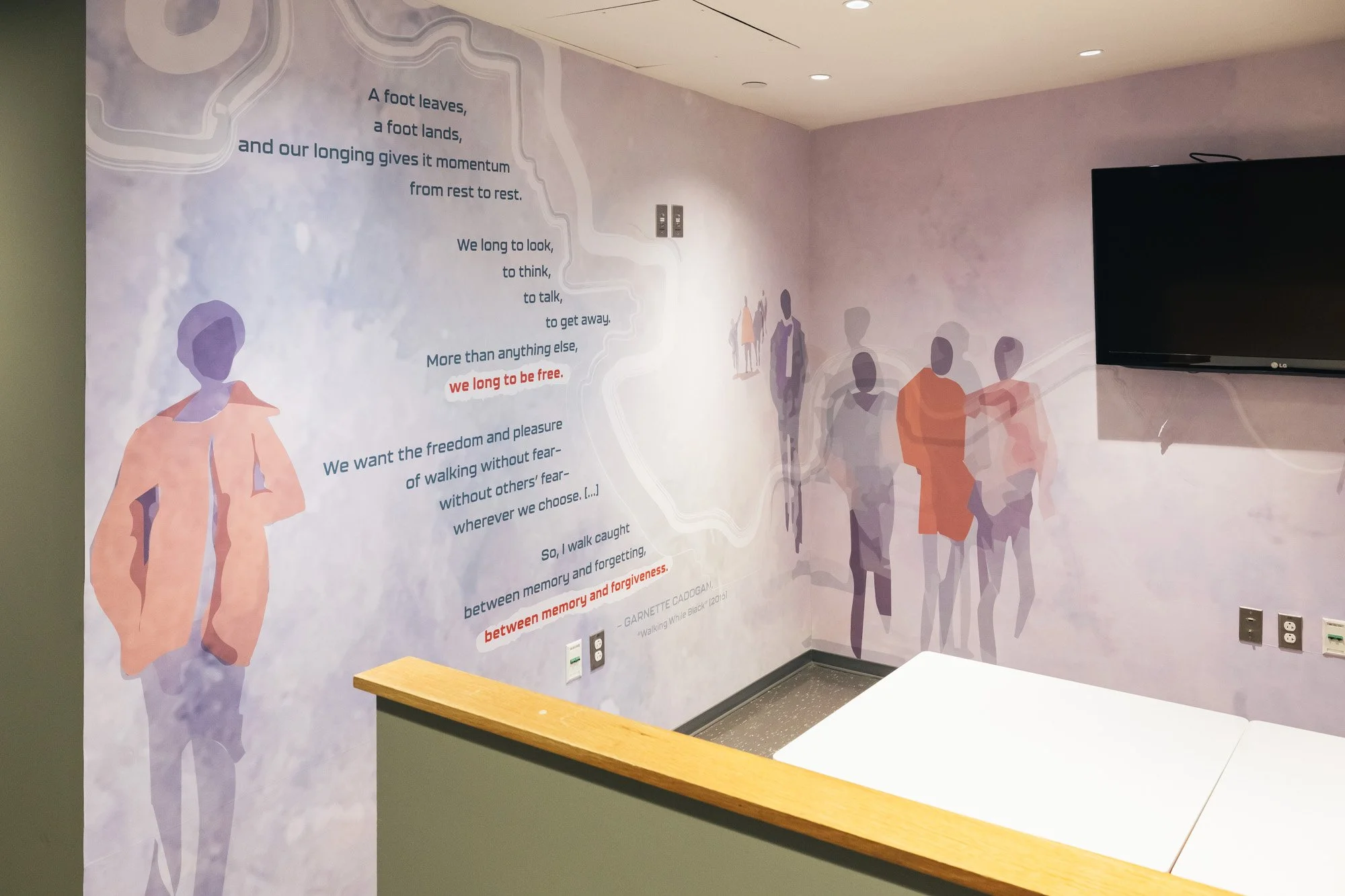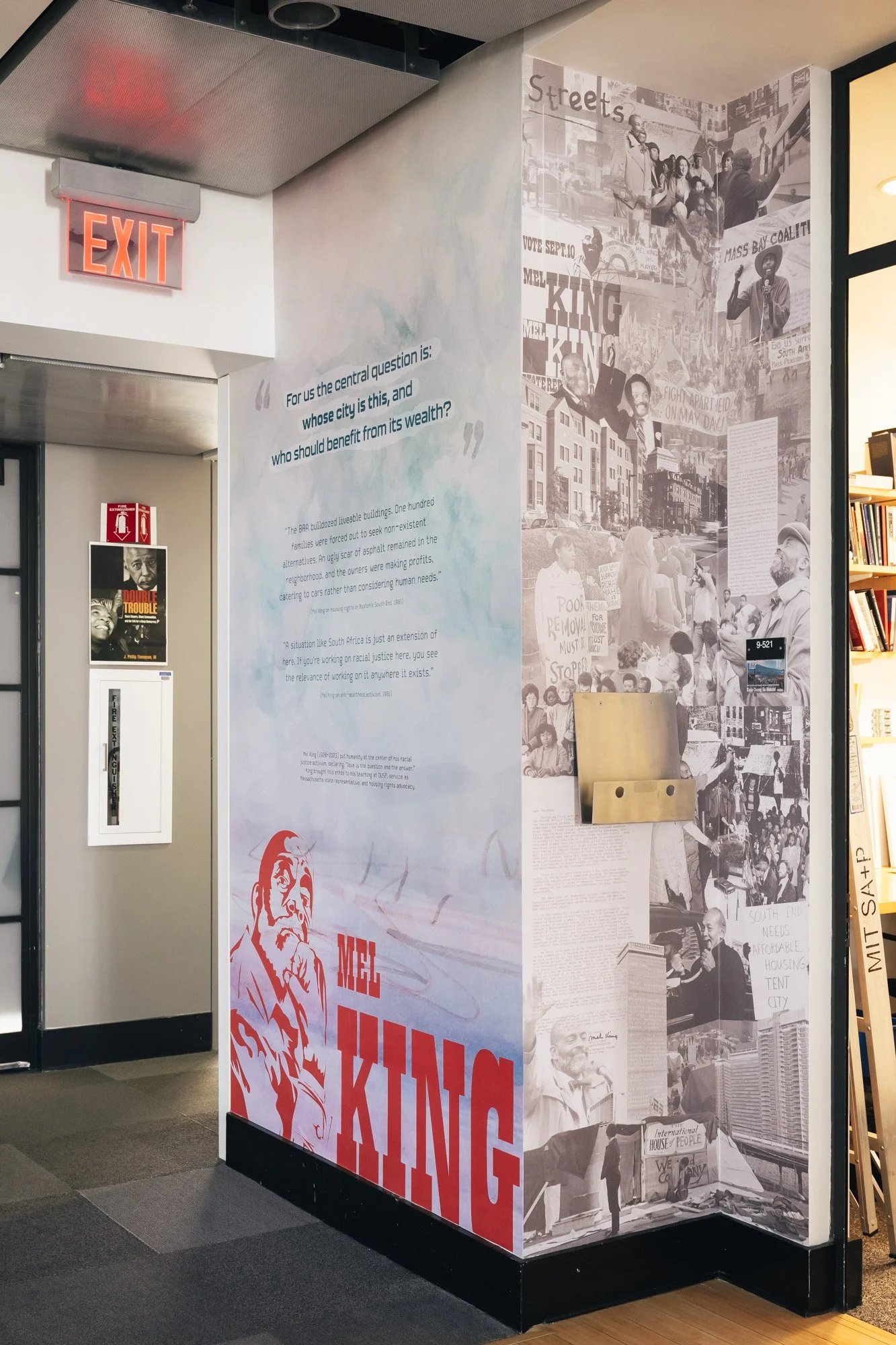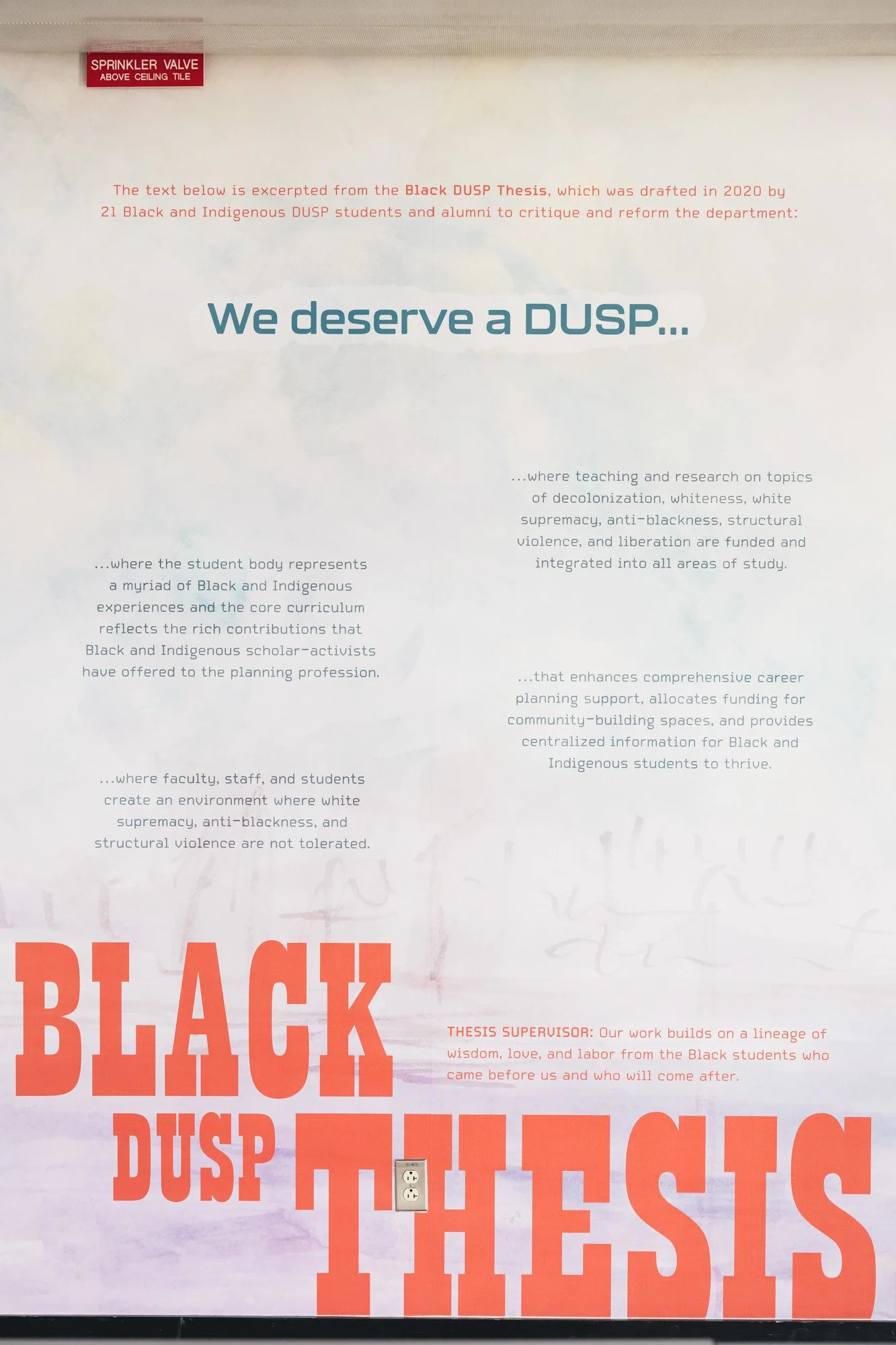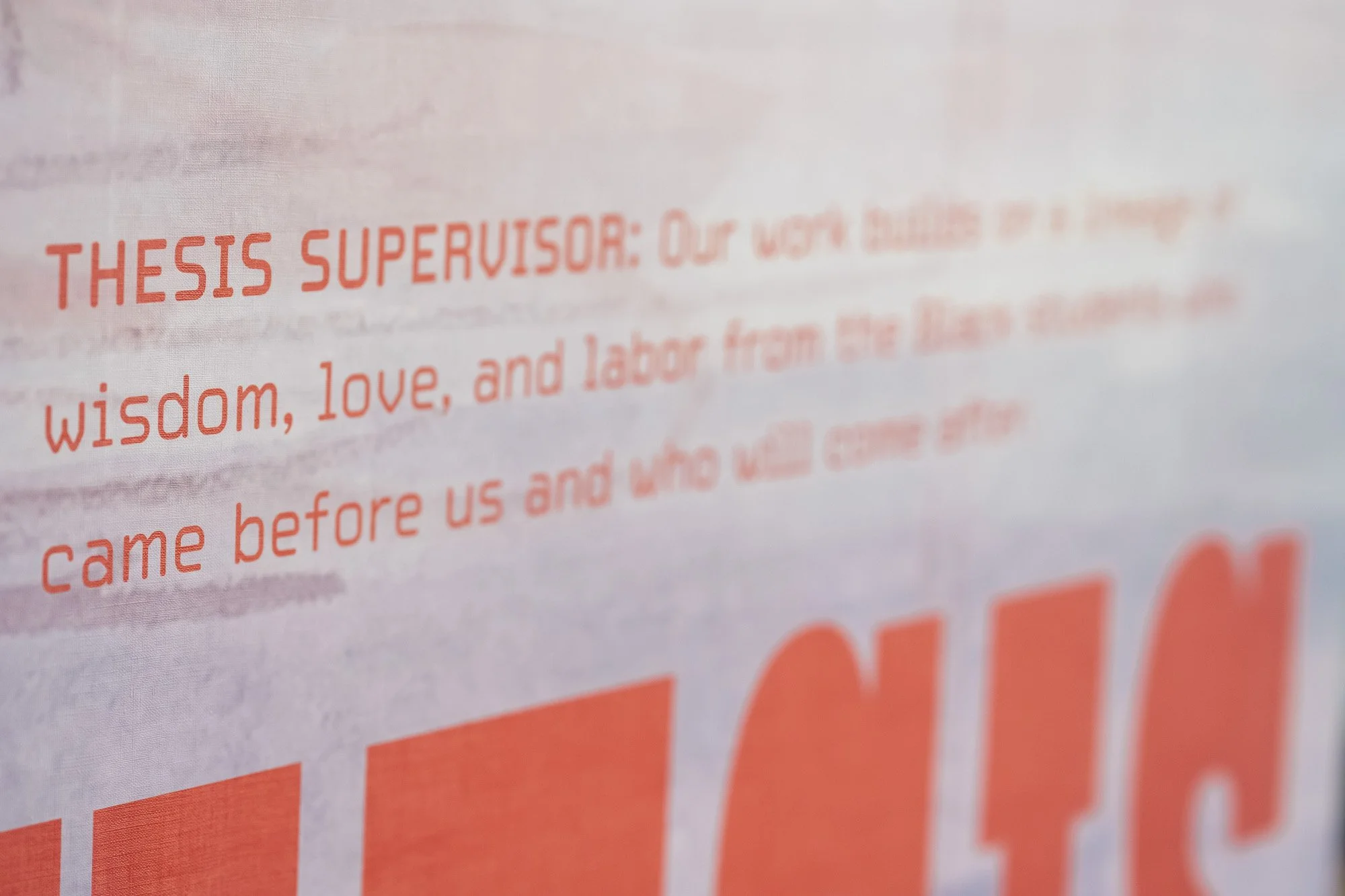MEMORY ATLAS FOR REPAIR
Massachusetts Institute of Technology, Building 9 Room 555 (2024-2026)
an installation to demonstrate the power of collective memory in forms of repair. At the center of the project: the representation of peace processes undertaken in three U.S. cities: Providence, Evanston, and Asheville. Three “chandeliers” hang from a skylight to account for the urban planning harms that communities of color in those cities experienced. Stiff bead strands hang from water-jet cut metal map plates to visibly account for the the deaths, dislocations, and home and business destructions caused by racialized violence, redlining, and urban renewal in each city. The plates incorporate mirrored maps of affected neighborhoods, which reflect viewers below, and cast shadows, evoking the legacies of violence, from the skylights above. Etchings on the adjacent glass wall display quotes by residents on the need for and imagined forms of repair. The installation conveys the critical importance of considering marginalized memories in urban futures along with the roles of urban planners in reparative work.









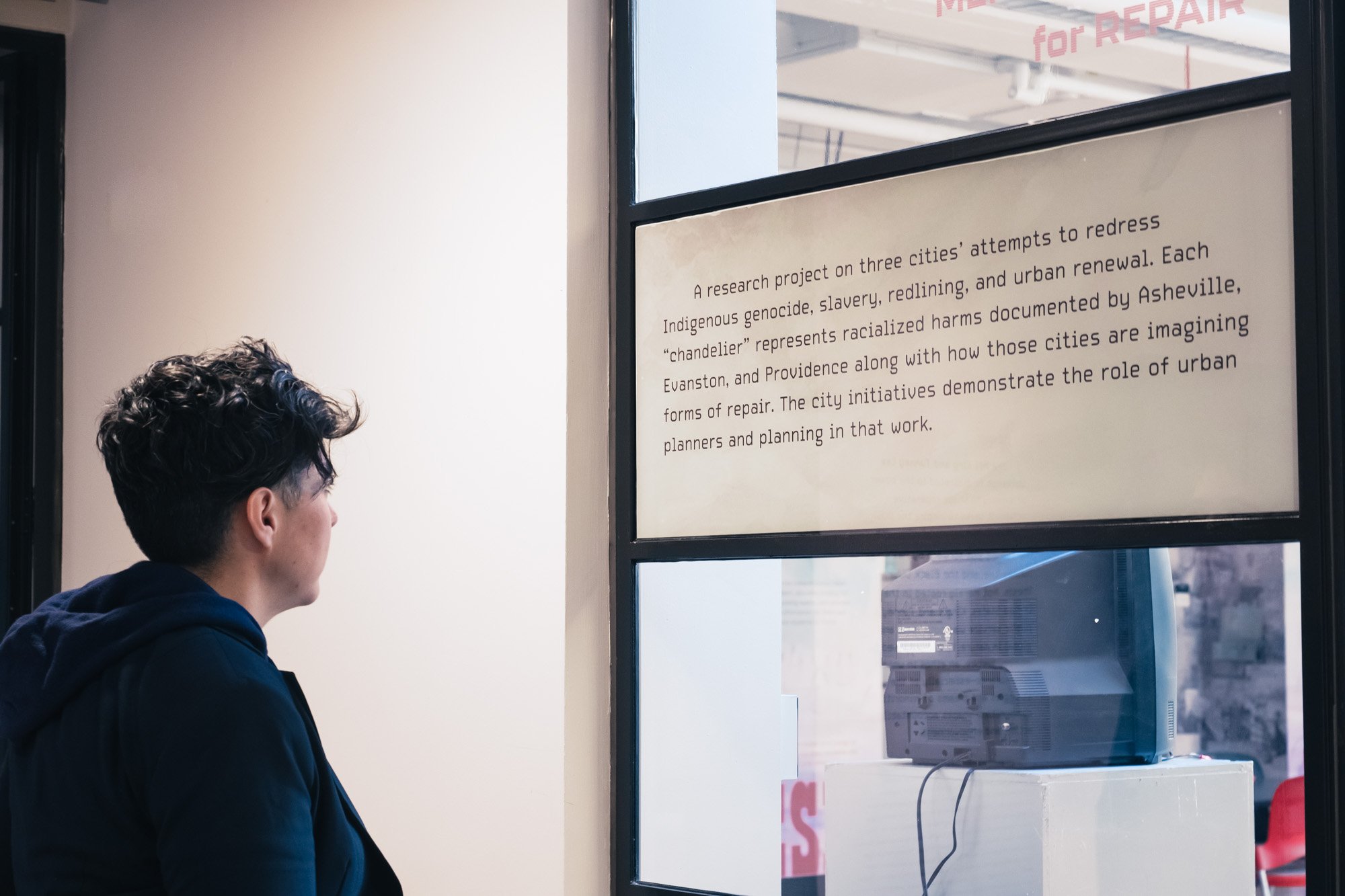

Asheville, NC

Providence, RI
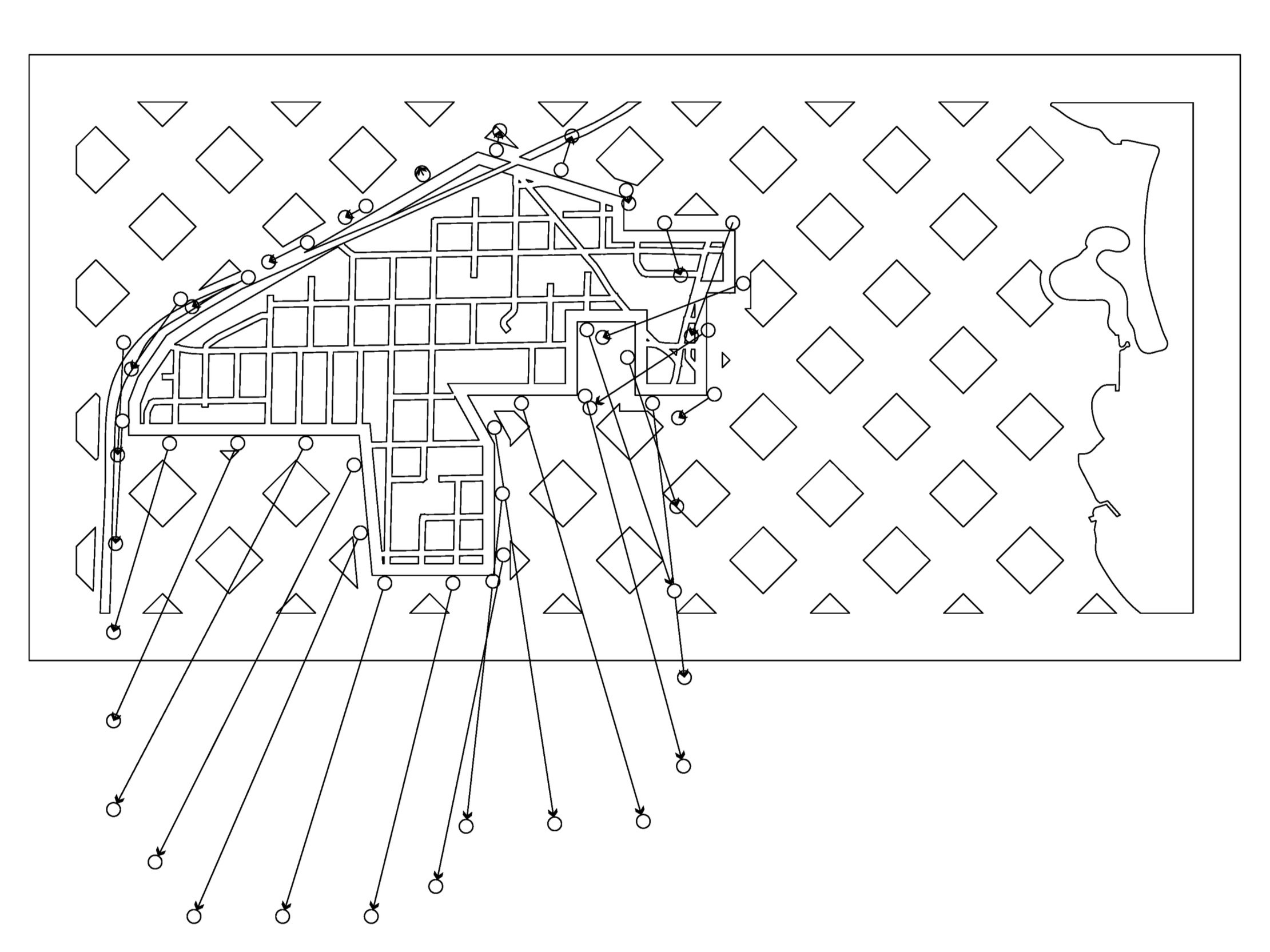
Evanston, IL


